Fabulous and Funky Fermented Foods
I am excited about this week's post because I am covering one of my favourite subjects, fermented food. To be fair, I am a lot better at eating it than making it but all that is going to change now I have both my new fermentation handbook 'The Cultured Club' by Dearbhla Reynolds and our new range of handmade Dutch stoneware fermentation pots!
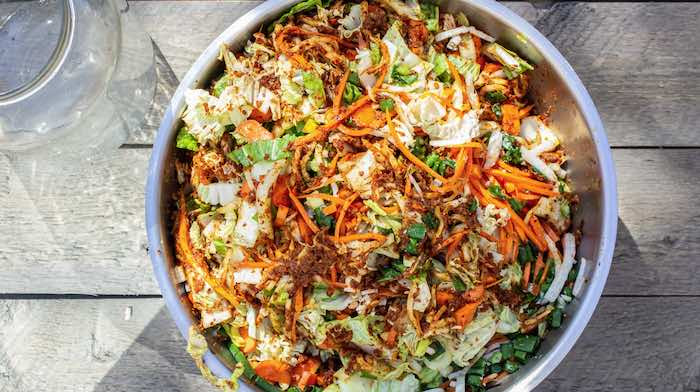
I know fermented food, and sauerkraut in particular, may not be to everyone's taste but in recent years these underrated foods (both in flavour and health benefits) have enjoyed a renaissance. I will admit your basic saerkraut looks like something from a 1970's cookbook on the plate (brown and monochrome) but fermented foods have a lot more to offer both in the flavour and the looks department as you will see in a minute.
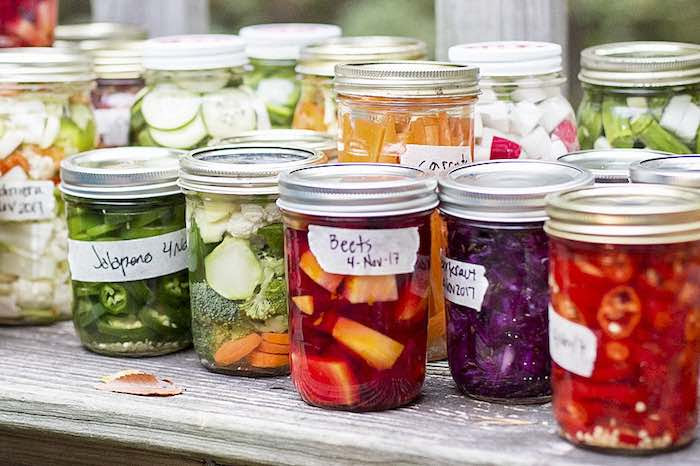
Preserving and storing fruit and vegetables
The other reason I have an interest in fermentation (apart from the flavour) is that it is also a safe and very efficient way to store some of the produce from the vegetable garden. Vegetables used freshly picked simply can't be beaten but I have always found storage methods that try to preserve this freshness (I'm talking about freezing) particularly unsatisfactory. Even if you go to the trouble of using the inexact and cumbersome science of blanching and freezing in small batches, you still end up with something that you need to convince yourself is nearly as good as it was when it was picked. It is not.
Maybe I have never mastered the blanching art, but in my opinion you are better cooking a finished dish or component of a dish (e.g. a tomato sauce base) and freezing that (because the cooking de-activates the enzymes that cause frozen food to degrade, hence blanching). The other option is to process your valuable produce in another way and unleash a different world of flavours rather than trying to preserve what you have. This is where the world of fermentation comes in.
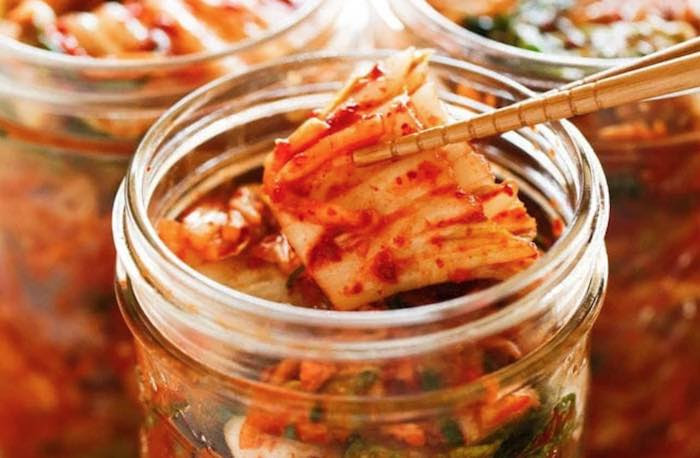
What is fermentation?
It doesn't sound great but fermentation is essentially a controlled decaying of fruit or vegetables that alters their flavour and naturally preserves them. It is an ancient food preservation method practiced by cultures (see what I did there) all over the World and gives us the aforementioned European sauerkraut and spicy Korean Kimchi but is also responsible for the basics like bread (sourdough) or beer.
The process produces fantastic flavours but also a host of good bacteria and digestive enzymes that improve your overall gut health. The fermented food itself is easier for us to digest (and benefit from) because the process of breaking down more complex compounds into easily digestible ones has already begun before we eat them.
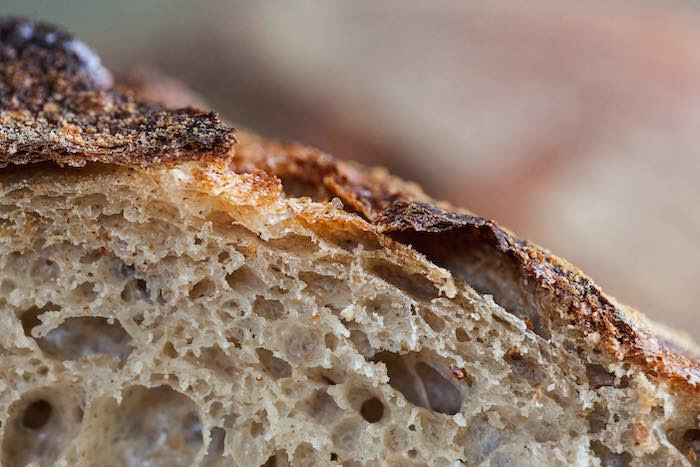
Interestingly, fermented food often contains more vitamins (particularly vitamin C) than the raw ingredients did in the first place.I thought this sounded a bit suspect but again, it is the partial breaking down (pre-digestion I suppose) that makes the vitamins more available rather than actually raising the vitamin content.
I remember reading a quote in Michael Pollan's book 'Cooked' as follows: "If I gave you a bag of flour and water you could live on it for a while but eventually you would die but if you take that same bag of flour and water and bake it into bread you could live indefinitely", this, as far as I remember, has a lot to do with the initial fermentation of the dough making the raw materials more nutritious.

The reason for the image of the ship (Cook's HMS Endeavour) above is that scurvy (caused by vitamin C deficiency as you know) was a major problem for early long distance sailors. I think it was known at the time that oranges were a cure but perhaps it wasn't possible to keep oranges or orange juice fresh for months at sea. What nutritious, delicious and easy to store food which is high in vitamin C did Captain James Cook bring with him to solve the problem? Sauerkraut.
We are going even more off the point now (what's new?) but it was also discovered that sailors who ate the ship's rats were inadvertently protecting themselves from scurvy as rats synthesize their own vitamin C from glucose. They must have really not liked fermented cabbage.
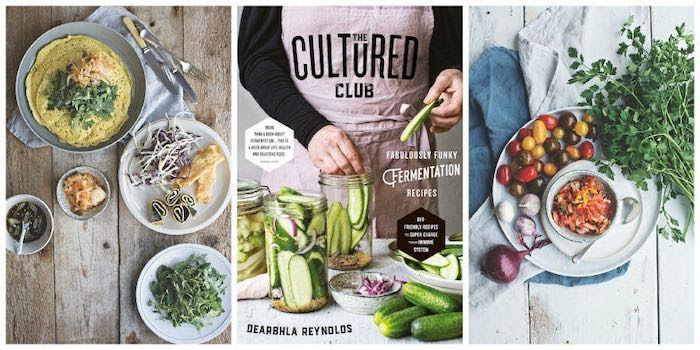
Dearbhla Reynolds and 'The Cultured Club'
I don't think I've done a very good job promoting fermented food so far (probably talking about rats and and scurvy doesn't help) so I had better leave it to the experts. As I have said, I am a big fan of ferments and pickles and am ashamed to say I have been buying a lot of it rather than making my own. I have made some sauerkraut and learned a delicious spicy and fruity kimchi recipe from the Organic centre but my output has not been impressive.
To remedy this situation, I ordered 'The Cultured Club - Fabulous Funky Fermentation Recipes' as it had come highly recommended and I am not exaggerating when I say it is not only the best recipe book I have, but probably the best book full stop. Dearbhla Reynolds is clearly not someone who has recently jumped on the fermentation bandwagon as this book contains over 200 recipes and covers saurkraut, kimchi, vegetable ferments, fruit ferments, condiments, milk and nut ferments, breads, soups, eggs, desserts and beverages, it's all in there.
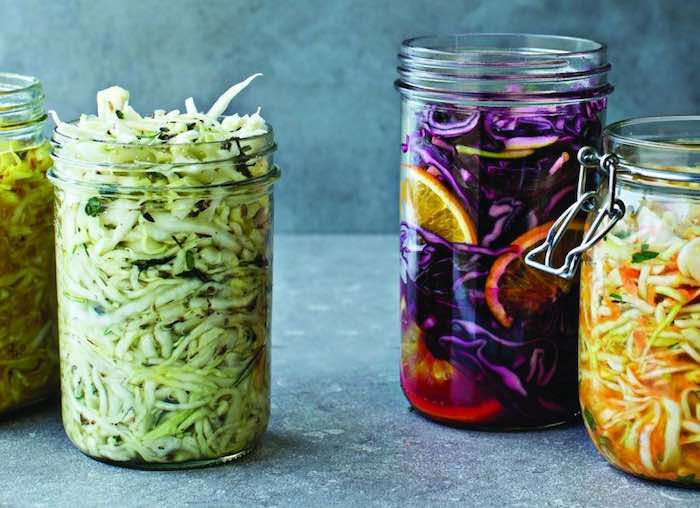
The book is a beautiful one too, it is uncluttered and easy to use and written with a friendly, engaging and enthusiastic style. The photography is stunning with just enough to get you excited but not too much to overpower the text. One thing I really liked about the design is there is plenty of white space for you to rest your eye making perusal a pleasant experience; it makes you get started on the recipes one at a time rather than getting overwhelmed by too much new information. I love it.
As regards the most important part, what you can make, the book in huge. Forget about monochrome 1970's sauerkraut (though a basic kraut is in there) and think about a kaleidoscope of colour and flavour like Krishna Kraut or Spicy Seaweed Kraut, Apple Ginger Kraut with Orange or Golden Kraut all pictured above. See what I mean?
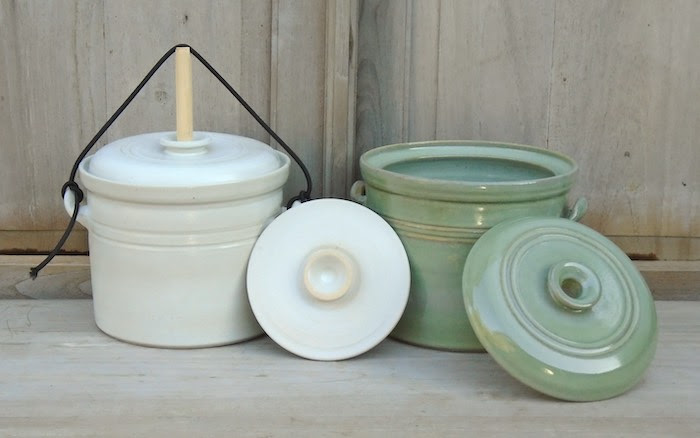
Our Handmade Saerkraut and Kimchi Pots
So, where do we come in? (i.e. OK Andrew, what are you going to try to sell us now?). Well, after talking to a few expert fermenters, it seemed that good, traditional fermentation crocks are difficult to get. There are cheaper ceramic glazed pots on the market but apparently the glaze would commonly crack due to the action of the lactic acid in the ferment which render the crock useless after a couple of batches.
Our new range of sauerkraut and kimchi pots are hand thrown by Dutch master ceramist Peter Hinssen who has been making these stoneware vessels for over 50 years. The ceramic is fired and glazed at a very high 1320˚C to produce an extremely hard wearing pot and is guaranteed 100% lead and toxin free so nothing nasty gets into your pickles. Like Dearbhla's book, I hope you will agree our crocks are also beautiful with a range of soft colours like lichen green, ivory white in the kimchi pots above or the soft grey shown in a 3L sauerkraut crock below.
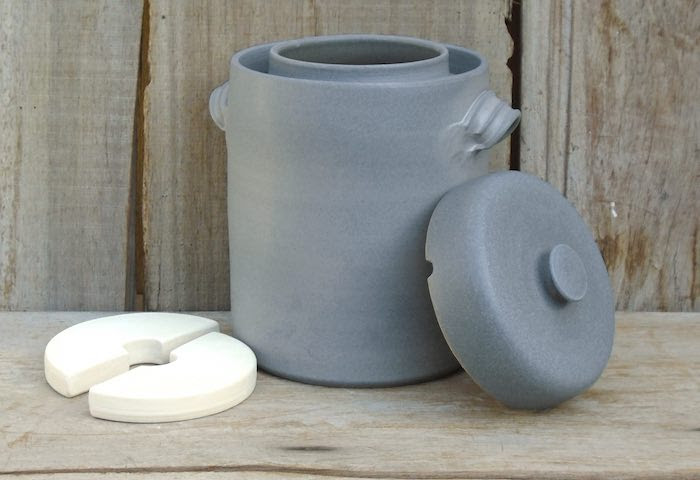
Is a ceramic vessel better than a glass jar?
In general, glass jars are good for smaller ferments or for when you are getting started. A relatively small glass jar has an advantage as they allow quick success and immediate feedback on whether you’re using the right amount of salt, keeping your ferment under the brine, and what flavors you prefer. If you get the bug (or, more accurately, the good bacteria) and want to make bigger batches, larger stoneware crocks start to make sense.
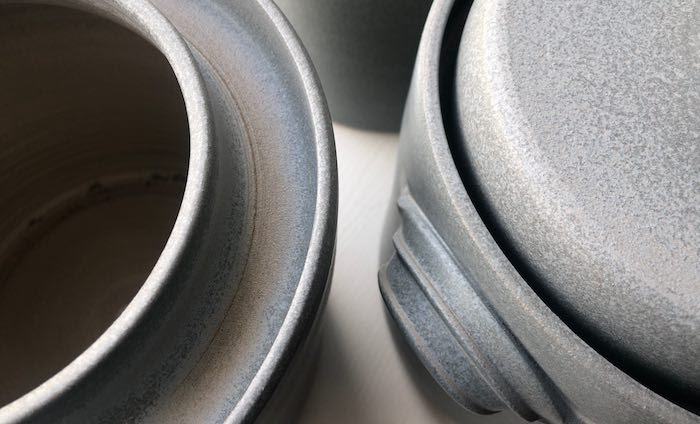
Stoneware crocks
There are a number of advantages of a stoneware crock apart from the fact that they are available in larger sizes than glass jars, the principal one being the sealing system. As you can see in the image above, the crock lid sits in a gutter running around the top of the pot. Once your ingredients, fermenting liquid and weighstones have been added, the gutter is filled with water before the lid is put on and seals the jar. The advantage is that the water seal prevents air or contaminants entering the crock while the gas produced in the fermenting process can safely bubble out without building up pressure inside.
The other advantages of the traditional fermenting crock system is that you get a more even temperature both from the larger volume and the thicker ceramic walls. A more stable ferment with an even temperature results in a greater range and number of good bacteria
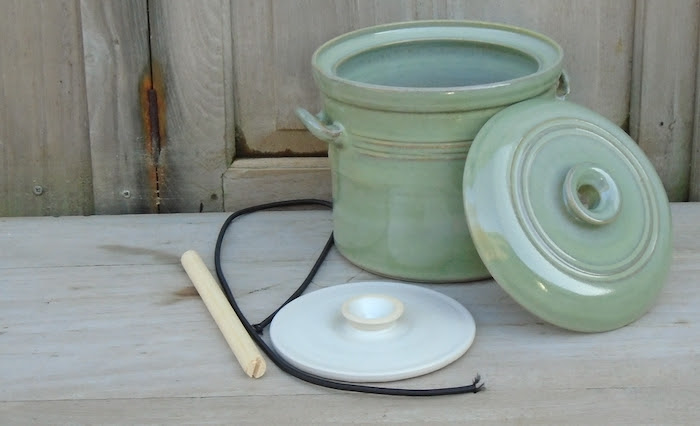
Kimchi Pots
Our kimchi pots produce a delicious spicy kimchi in about 5 days and employ and ingenious system to keep the ingredients below the brine level (this is crucial as if the vegetables protrude above the brine they will spoil). The 2L pot includes an extra inner lid which keeps the vegetables submerged with the aid of a timber rod slotted through the lid, the rod is then kept under tension by an elasticated cord fixed to the pot handles. Clever eh?
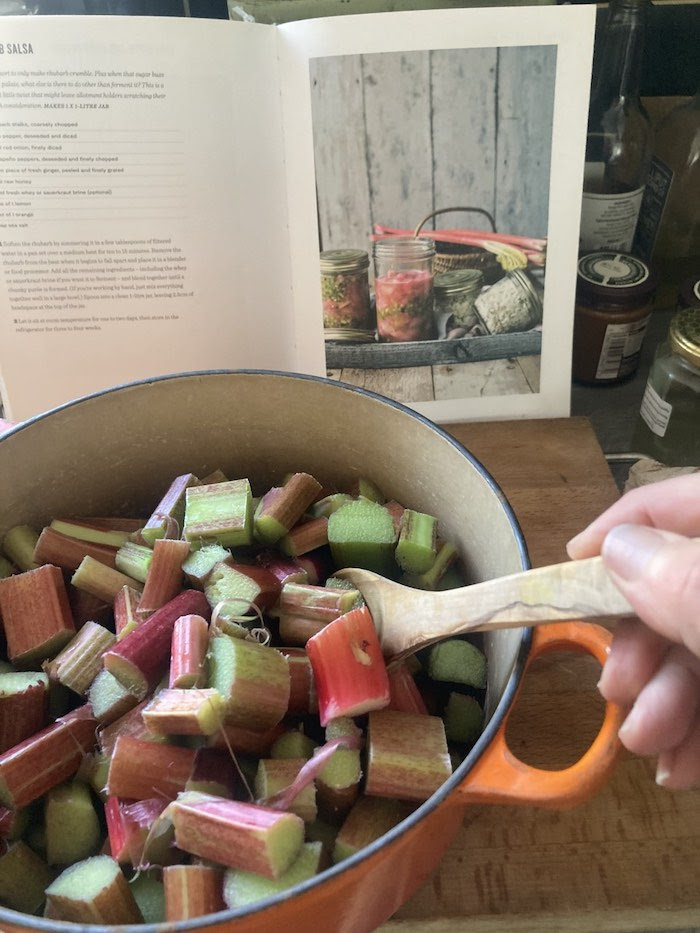
As I said earlier, I am a complete novice at all this but, with the aid of 'The Cultured Club', fresh vegetables from the garden and jars, pots and crocks of various sizes, I look forward to gaining some more experience over the summer.
I am going to finish up with a recipe as I had contacted Dearbhla Reynolds to ask if it was OK to feature her book and to see if she'd like to try one of our new pots (she would). She also said she was in the middle of making rhubarb salsa (for the season that's in it) and even sent a photo to prove it. I include the photo above and the recipe below.
Rhubarb Salsa
Life is too short to only make rhubarb crumble. Plus when that sugar buzz leaves your palate, what else is there to do other than ferment it? This is a pretty neat little twist that might leave allotment holders scratching their heads with consideration. MAKES 1 x 1-LITRE JAR
7-8 rhubarb stalks, coarsely chopped
1/2 green pepper, deseeded and diced
1/2 small red onion, finely diced
1-2 jalapeno peppers, deseeded and finely chopped
5-8cm piece of fresh ginger, peeled and finely grated
120ml raw honey
120ml fresh whey or sauerkraut brine (optional)
Juice of 1 lemon
Zest of 1 orange
1 tsp sea salt
1 Soften the rhubarb by simmering it in a few tablespoons of filtered water in a pan set over a medium heat for 15 mins. Remove the rhubarb from the heat when it begins to fall apart and place it in a blender or food processor. Add all the remaining ingredients - including the whey or sauerkraut brine if you want it to ferment - and blend together until a chunky puree is formed. (If you're working by hand, just mix everything together in a large bowl). Spoon into a clean 1-llitre jar, leaving 2.5cm of headspace at the top of the jar.
2 Let it sit at room temperature for one to two days, then store in the refrigerator for three to four weeks.
That's it for today, see you all next week!
Andrew
